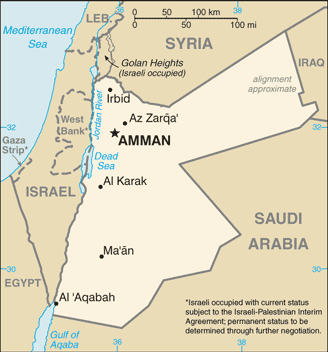Welcome to Enchanting Journeys
-
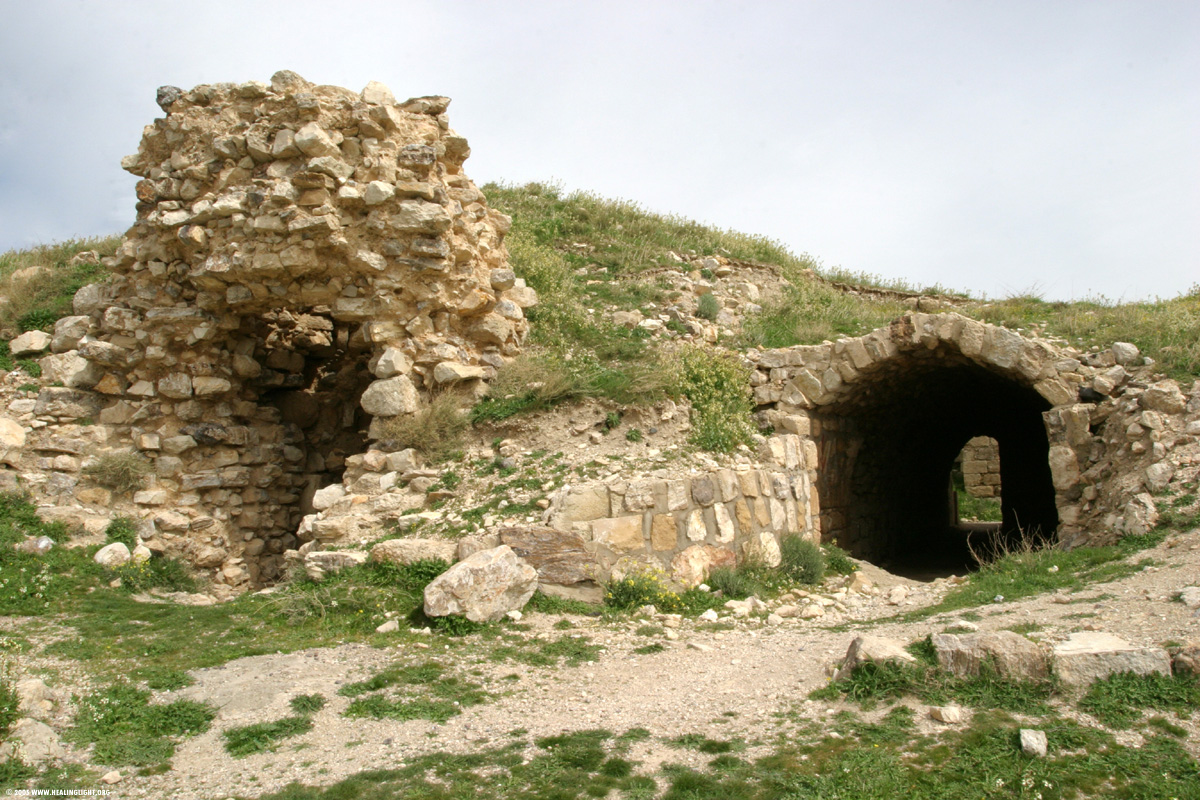 Jordan
Jordan
Classic JordanFrom : $ Please requestDiscover : Amman * Jerash * Bethany......Includes :• All Transfers with a Journeys Rep• Accommodation of 7 nights with Breakfast• Services of an English speaking Guide• Entrance Fees• Private A/c Transport• 24/7 Assistance• Farewell Gift -
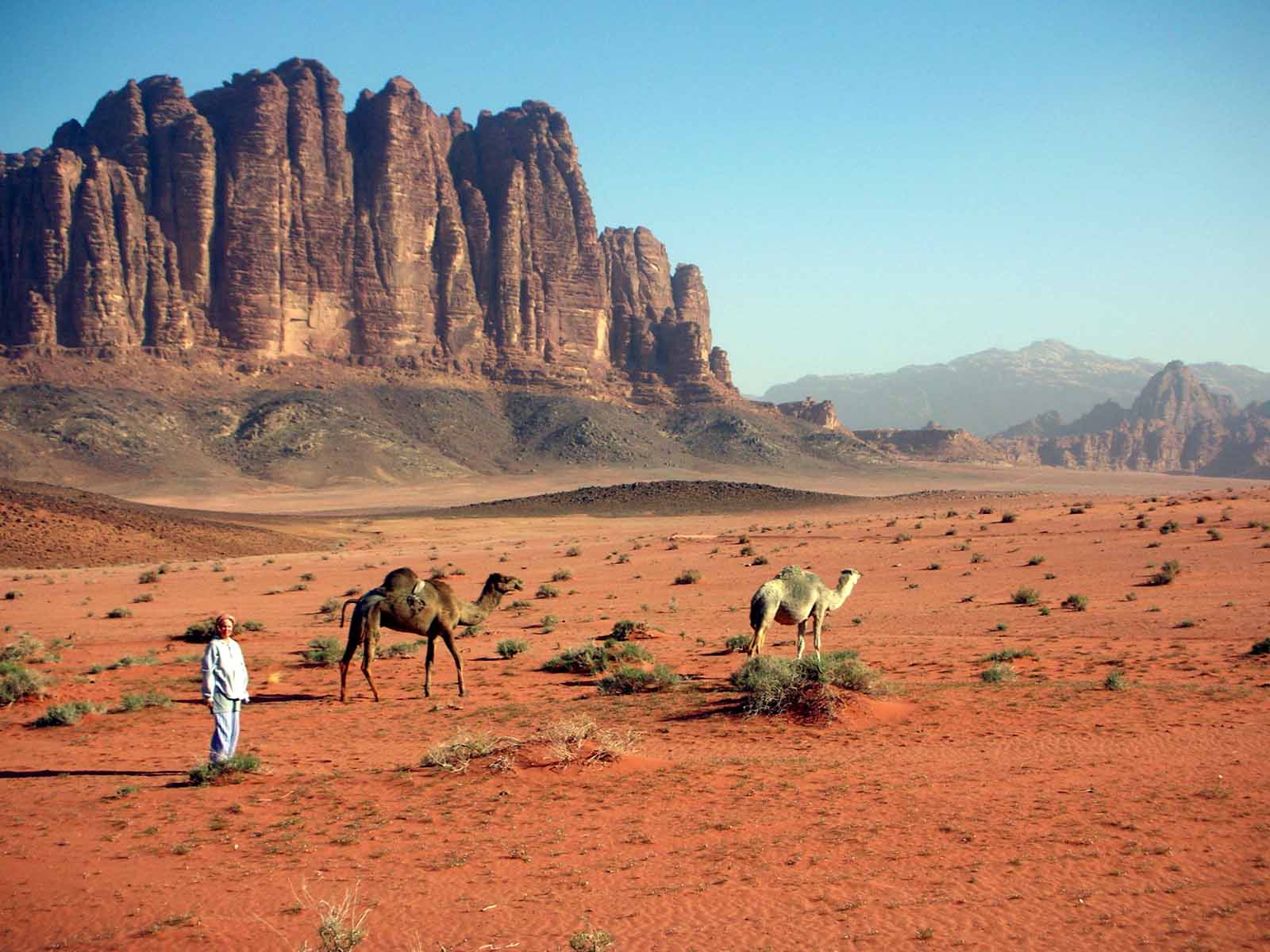 Jordan
Jordan
Jordan - a Culinary OdysseyFrom : $ Please requestDiscover : Amman * Jerash * Ajloun......Includes :• All Transfers with a Journeys Rep• Accommodation for 6 nights on Half Board• Services of English speaking Tour-guides• Entrance fees, wherever applicable• All Government Tax & Service Fees• 24 / 7 Emergency Support• Farewell Gift -
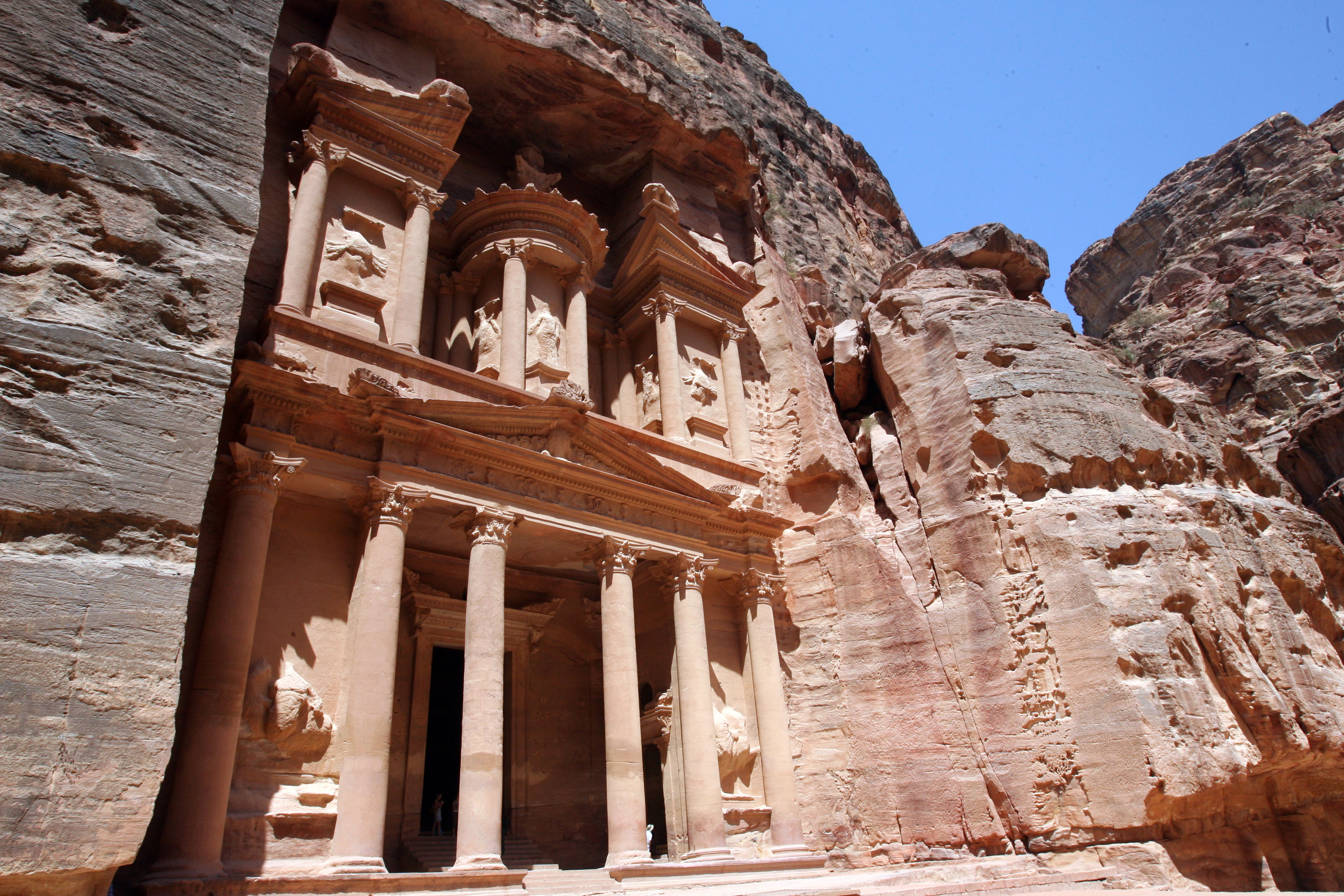 Jordan
Jordan
Hello AmmanFrom : $ Please requestDiscover : Amman * PetraIncludes :• All Transfers with a Journeys Rep• Accommodation of 2 nights with Breakfast• Services of an English speaking Guide• Entrance Fees• Private A/c Transport• 24/7 Assistance• Farewell Gift -
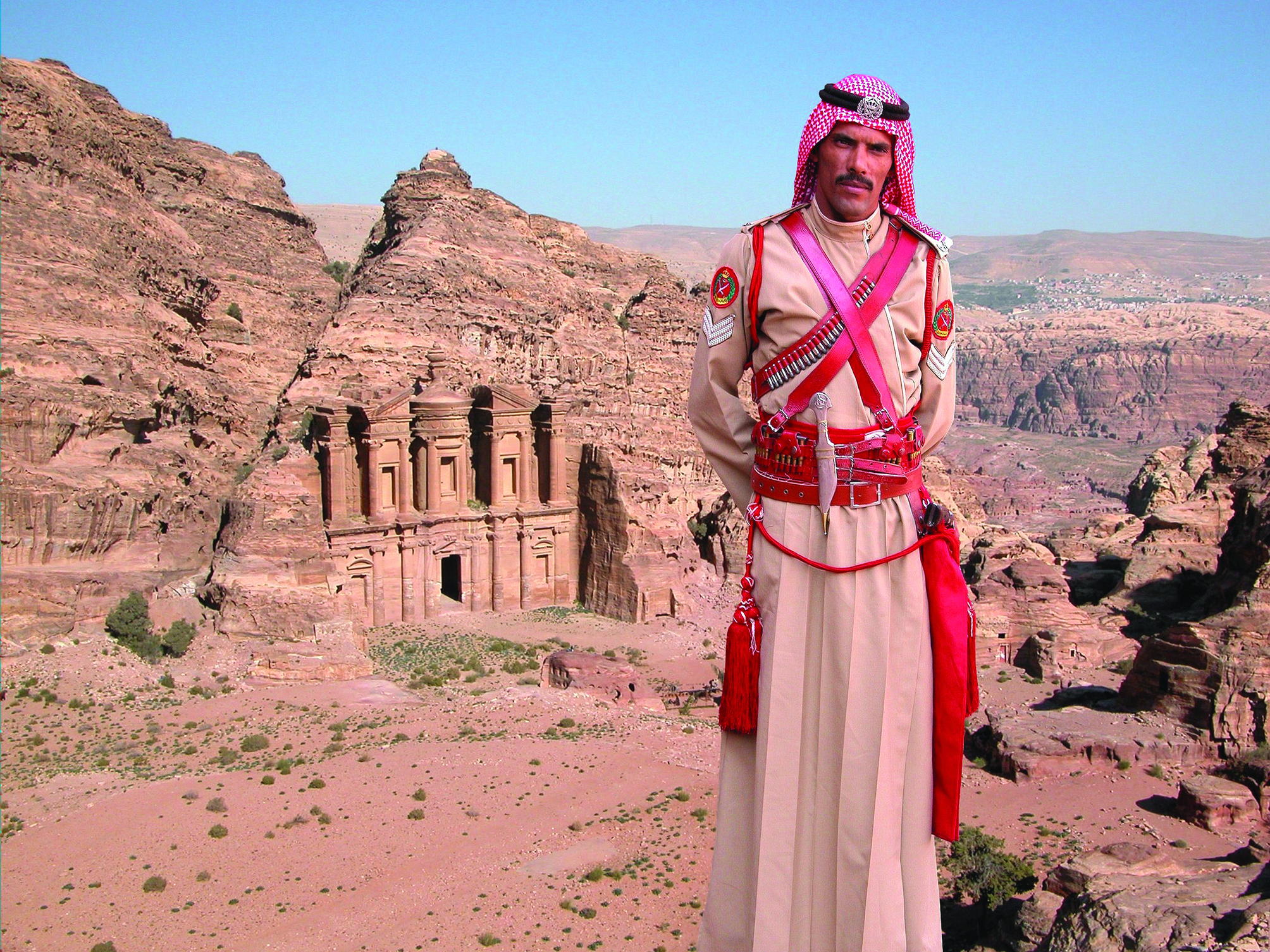 Jordan
Jordan
Jordan StopoverFrom : $ Please requestDiscover : Amman * Jerash * Dead Sea......Includes :• All Transfers with a Journeys Rep• Accommodation of 4 nights with Breakfast• Services of an English speaking Guide• Entrance Fees• Private A/c Transport• 24/7 Assistance• Farewell Gift -
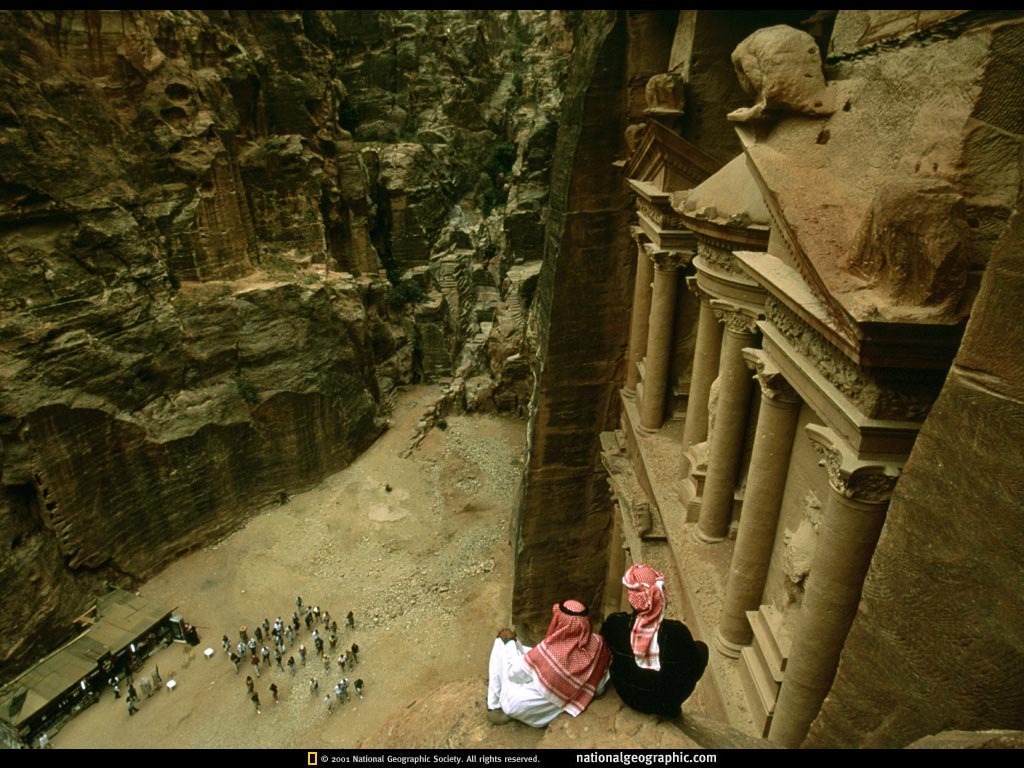 Jordan
Jordan
Coming soonFrom : $ Coming soonDiscover : -
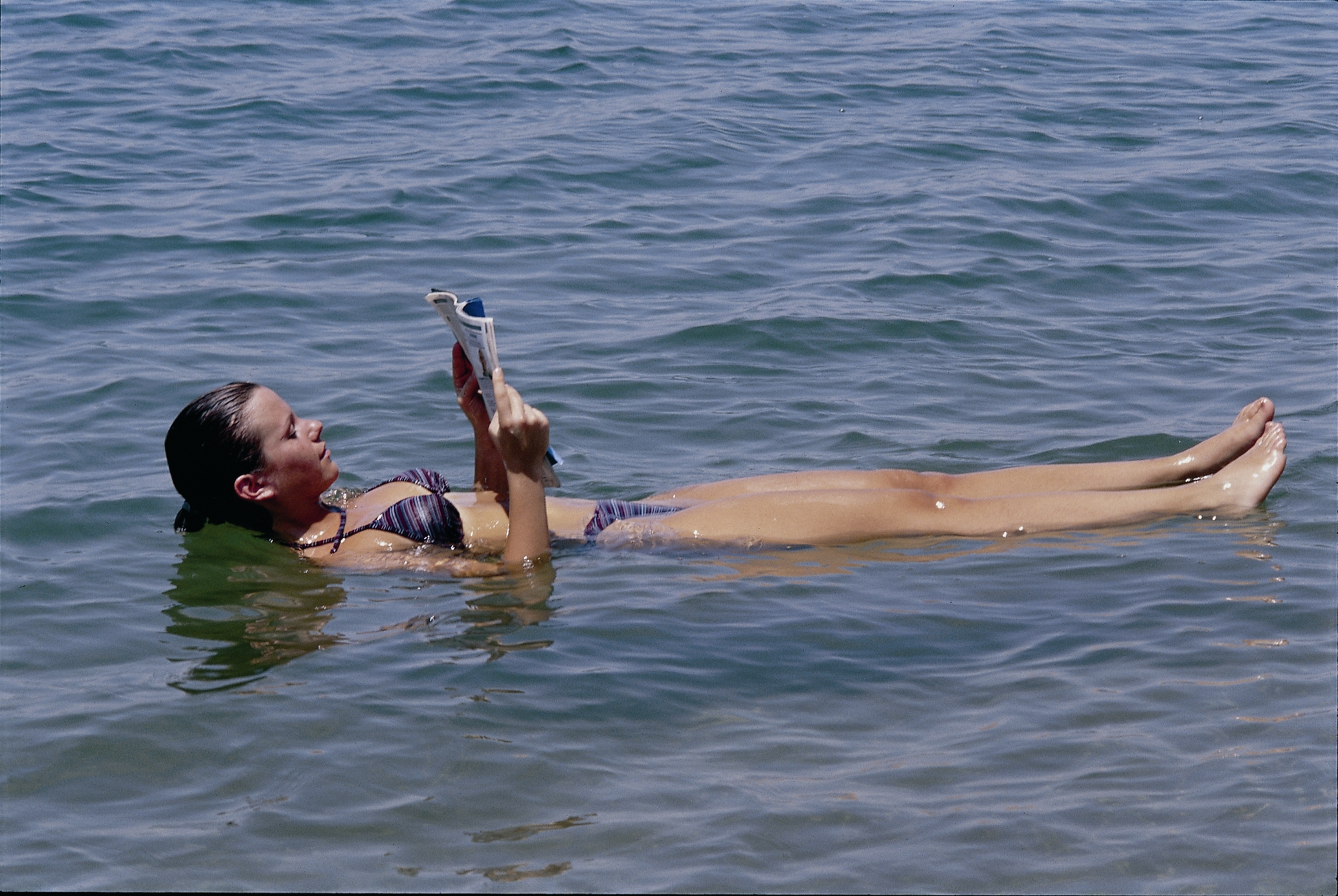 Jordan
Jordan
Coming soonFrom : $ Coming soonDiscover : -
 Jordan
Jordan
Glimpses of Jordan & IsraelFrom : $ Please requestDiscover : Jordan & IsraelIncludes :• All Transfers with a Journeys Rep• Accommodation for 6 nights with B/fast• Services of English speaking Tour-guides• Entrance fees, wherever applicable• All Government Tax & Service Fees• 24 / 7 Emergency Support• Farewell Gift

Thank you.
alttag
- Overview
- Itinerary
- Inclusion
- Hotels
- Rates
- Information

Mystical Jordan…time to go is now
Classic Jordan
The world is a book, & those who do not travel read only one page.” – Saint Augustine
The Middle East is a grand epic, a cradle of civilisations & a beautiful, complicated land that is home to some of the planet's most hospitable people. Quite simply extraordinary, one of the world's most fascinating & rewarding travel destinations.
The word is out: as far as off-the-beaten-path destinations go and if you fancy travelling somewhere different Hashemite Kingdom of Jordan is the place to go. A safe haven in a region of conflict, Jordan has delighted visitors for centuries with its world heritage sites, friendly towns and inspiring desert landscapes. More than ever, intrepid travellers are making their way to Kingdom and there’s little wonder why. Come……experience Jordan with us………
The Middle East is quite simply extraordinary, one of the world's most fascinating & rewarding travel destinations.
In the Middle East, history is not something you read about in books. Here, it is a story written on the stones that litter the region, from the flagstones of old Roman roads to the building blocks of ancient Egypt & the delicately carved tombs & temples from Petra to Persepolis. This is where humankind first built cities & learned to write. It was here that some of the most significant civilisations of antiquity rose & fell and where the 3 great monotheistic religions - Judaism, Christianity and Islam - were born.
Wherever you find yourself, the past is always present because here, perhaps more than anywhere else on earth, history is the heart & soul of the land. Left behind is an astonishing open-air museum of ancient cities & historic buildings, the stones of which still resonate with the sounds of the faithful.
The region is home to some of the world's most significant cities - Jerusalem, Cairo, Damascus, Teheran, Baghdad & Istanbul. The ruins of the once similarly epic cities of history - Petra, Persepolis, Ephesus, Palmyra, Baalbek, Leptis Magna & the bounty of ancient Egypt, also mark the passage of centuries in a region where the ancient world lives and breathes.
The landscapes of the region are equally spellbinding, from the unrivalled seas of sand dunes & palm-fringed lakes in Libya’s Sahara desert to the stunning mountains of the north and the underwater world of the Red Sea.
Above all else, however, your most enduring memory of the Middle East is likely to be its people. Their gracious welcome, many kindnesses & boundless hospitality speak of an altogether more civilised age. At some point on your visit to the Middle East, you will be sitting in a coffeehouse or looking lost in a labyrinth of narrow lanes when someone will strike up a conversation &, within minutes, invite you home to meet their family & share a meal. Or someone will simply approach & say with unmistakable warmth, ‘Welcome’. These spontaneous, disarming & utterly genuine words of welcome can occur anywhere across the region. And when they do, they can suddenly (& forever) change the way you see the Middle East.
From the gravitas of the Sahara to the blue tiles of Esfahan, this is a region for discerning travellers, for those looking for the story behind the headline, and where the bridges between ancient & modern civilisations are everywhere evident. If you believe what the media & politicians tells you & decide not to visit, you would be missing out on the journey of a lifetime.
Enough & now let us talk about Jordan is a tiny desert kingdom wrapped in history.
Ancient Antiquity | Desert Landscape | Cultural Dynamism
Once an important trading center of the Roman Empire, and straddling the ancient Holy Land of the world's 3 great monotheistic religions, the Hashemite Kingdom of Jordan, which once captivated ancient travellers, continues to enthral a whole new generation as a modern, vibrant nation.
Jordan, an Arab nation on the east bank of the Jordan River, is defined by ancient monuments, nature reserves and seaside resorts. It is home to the famed archaeological site of Petra, the Nabatean capital dating to around 300 B.C.E. Set in a narrow valley with tombs, temples & monuments carved into the surrounding pink sandstone cliffs, Petra earns its nickname, the "Rose City.”
Jordan has a tradition of welcoming visitors: camel caravans plied the legendary King’s Highway transporting frankincense in exchange for spices and Nabataean tradesmen, Roman legionnaires, Muslim armies and zealous Crusaders all passed through the land, leaving behind impressive monuments. These monuments, including Roman amphitheatres, crusader castles and Christian mosaics, have fascinated subsequent travellers in search of antiquity and the origins of faith. The tradition of hospitality to visitors remains to this day.
From the haunting, primeval starkness of Wadi Rum, to the teeming centre of urban Amman; from the majestic ruins of bygone civilizations to the timeless splendour of the Dead Sea, Jordan is unveiled as a unique destination offering breathtaking and mysterious sights, high standard accommodations, exquisite cuisine and countless activities that can provide visitors with inspiration, motivation & rejuvenation.
Marvelling at herds of gazelles and Oryx and migrating birds, camping amidst the grandeur of Wadi Rum or Dana Reserve, trekking the ancient caravan trails from the highlands of Moab and Edom, hiking the wooded hills of biblical Gilead, or experiencing the unique, cleansing mud baths of the Dead Sea are just a few examples of the treasures awaiting visitors to this unique kingdom.
There is no mistaking the fact that Jordan is a Kingdom steeped in history and culture. From the moment you arrive, you get a sense of its rich heritage, all around are remnants of ancient civilizations long since past, yet they still remain, stamped into the very fabric of this amazing Kingdom and etched into the soul of the people who live here.
Take a ride through Wadi Rum at sunset and it's easy to see why Lawrence of Arabia was so drawn to this land of weathered sandstone & reddened dunes. But Jordan's landscapes are not confined to the desert, they encompass a salt sea at the lowest point on earth, canyons flowing with seasonal water, oases of palm trees and explosions of springtime flowers scattered across arid hills.
This journey will commence with a sightseeing tour of Amman. Next stop will be Jerash, the ancient Graeco-Roman city that boasts an unbroken chain of human occupation dating back more than 6,500 years. Visit Bethany, where Jesus was baptized. Experience the wonders of the Dead Sea & rejuvenate.
Visit Madaba known as the “City of Mosaics". Climb atop Mt. Nebo which offers stunning views over the Dead Sea, the Jordan Valley and the Holy Land towards Jerusalem. The trip continues on to the remote dead city of Petra, one of the great archaeological treasures in the world, to unfold the mysteries within. Enjoy a night at the Red Sea port of Aqaba before returning to Amman where the trip ends.
A unique experience is just the beginning……. Take the plunge now and yep….Jordan is waiting. Spectacular, affordable & still often uncrowded. A warm welcome awaits you and The Journeys is ready to take you on well, a journey (or journeys) of discovery.
Come...be inspired & experience the World……
|
Classic Jordan |
||
|
Day | Date |
City |
Transfers | Sightseeing |
|
Any Day |
|
|
|
01 | 00 | 0 |
Amman |
✈ Arrival Transfer | Free (balance of the day) |
|
02 | 00 | 0 |
Amman |
AM | PM Amman + Jerash | Free (balance of the day) |
|
03 | 00 | 0 |
Dead Sea |
AM v Transfer + Bethany | Free (balance of the day) |
|
04 | 00 | 0 |
Petra |
AM v Transfer + Madaba + Mt. Nebo + Kerak | Free (evening) |
|
05 | 00 | 0 |
Petra |
AM | PM Petra + Horse Cart ride | Free (balance of the day) |
|
06 | 00 | 0 |
Aqaba |
AM v Transfer + Wadi Rum Jeep Safari | Free (balance of the day) |
|
07 | 00 | 0 |
Amman |
AM vTransfer | Free (balance of the day) |
|
08| 00 | 0 |
Amman |
Departure Transfer ✈ |
|
|
||
|
|
|
|

![]()

Mystical Jordan - prepare to be charmed
Classic Jordan
Amman * Jerash * Dead Sea * Madaba * Mt. Nebo * Kerak * Petra * Wadi Rum * Aqaba * Amman
8 Days | 7 Nights
Day 01 - | Arrive ✈ Amman at ????
Middle East is a grand epic, a cradle of civilisations and a beautiful, complicated land that's home to some of the planet's most hospitable people.
Welcome to incredible Hashemite Kingdom of Jordan - the charming yet confounding kingdom that casts a spell on visitors with its World Heritage Sites, friendly towns with tradition of hospitality & inspiring desert landscapes.
Arrive in Amman, the gateway to an ancient world as well as the country's economic, political & cultural centre.
After you exit in the Arrival Hall at Terminal? - Amman Queen Alia International Airport, subsequent to Immigration & Customs, you will be welcomed by The Journeys representative who will ensure your comfort & transfer you to the hotel, help you settle in & provide you with some useful tips for exploring the area as well as discuss the program for the next day.
If, for any reason you are unable to make contact with our representative within 30 minutes of waiting, please call the local Emergency telephone # listed on your Contact List. Please follow the advice given by our 24 / 7 Duty Officer. Please do not exit the Airport & make your own way to the hotel.
Reach the hotel & Check-in.
*Check-in time is 02.00 pm. For earlier arrivals in the morning, we will request the hotel for a complimentary early Check-in but cannot be guaranteed unless reserved & paid for ‘immediate occupancy’.
Balance of the day is at leisure to relax or independent exploration or optional activities (We shall be happy to offer suggestions & make arrangements).
Amman, the modern capital of Jordan, is one of the oldest inhabited places in the world. A fascinating city of contrasts - a unique blend of old and new, situated on a hilly area between the desert & the fertile Jordan Valley
Recent excavations have uncovered homes & towers believed to have been built during the Stone Age. With many references to it in the Bible, Amman was known as Rabbath-Ammon, the capital of the Ammonites, it was also referred to as the “city of waters’. In the 3rd century BC, the city was renamed Philadelphia after the Ptolemaic ruler Philadelphus. The city later came under Seleucid as well as Nabtean rule, until the Roman General Pompey annexed Syria and made Philadelphia part of the Decapolis League - a loose alliance of initially ten free city-states under overall allegiance to Rome. Under the influence of the Roman culture, Philadelphia was reconstructed in typically grand Roman style with colonnaded streets, baths, a theatre & impressive public buildings.
During the Byzantine period, Philadelphia was the seat of a Bishop & therefore several Churches were built. The city declined somewhat until the year 635AD. As Islam spread northwards from the Arabian Peninsula, the land became part of its domain. It reverted to its original Semitic name Ammon or Amman.
The ancient capital of the Hashemite Kingdom of Jordan city spread over 19 hills, or "jebels"., is a fascinating city of contrasts - a unique blend of old & new, ideally situated on a hilly area between the desert & the fertile Jordan Valley. Often referred to as the white city due to its low size canvas of stone houses, the city offers a variety of historical sites. Towering above Amman, the site of the earliest fortifications is now subject to numerous excavations which have revealed remains from the Neolithic period as well as from the Hellenestic & late Roman to Arab Islamic Ages.
Though it lacks the storied history & thrilling architectural tapestry of other regional capitals, there is plenty here to encourage you to linger awhile before making for Petra, the Dead Sea or Wadi Rum. In fact, Amman is one of the easiest cities in which to enjoy the Middle East experience.
Amman’s modern history began in the late 19th century, when the Ottomans resettled a colony of Circassian emigrants in 1878. As the Great Arab revolt progressed & the State of Transjordan was established, King Abdullah I, the founder of the Hashemite Kingdom of Jordan, made Amman his capital in 1921. Since then, Amman has grown rapidly into a modern, thriving metropolis of well over a million people.
Downtown Amman is a must-see. At the bottom of the city’s many hills & overlooked by the magisterial Citadel, it features spectacular Roman ruins & the hubbub of mosques, souqs & coffeehouses, that are central to Jordanian life.
In the commercial heart of the city, ultra-modern buildings, hotels, smart restaurants, art galleries & boutiques rub shoulders comfortably with traditional coffee shops & tiny artisans' workshops. Amman’s neighborhoods are diverse and range in cultural & historical context from hustle & bustle of the downtown markets to the art galleries of Jabal Lweibdeh & the modern shopping district of Abdali
Elsewhere, urbane western Amman has leafy residential districts, cafes, bars, modern malls & art galleries; and in earthy eastern Amman, it’s easy to sense the more traditional and conservative pulse of the capital.
The 3 Museums located here, that offer a glimpse of history & culture, they are the Jordan Archaeological Museum, the Folklore Museum & the Museum of Popular Tradition. Due to the city’s modern-day prosperity & temperate climate, almost half of Jordan’s population is concentrated in the Amman area. The people of Amman are multi-cultural, multi - denominational, well-educated & extremely hospitable.
Balance of the day is at leisure or perhaps opt for one of the many options available (we will be happy to offer suggestions & make arrangements).
Overnight.
Day 02 - | Amman v Jerash & Ajloun v Amman Drive: 68 km x 2
Morning, meet the Tour-guide at 08:00 am, proceed for a full day 10 hour excursion to see the surrounding area.
But before leaving, spend a couple of hours exploring some of the highlights of Amman (though not much in Amman proper).
The Amman Citadel should be at the top of every Amman itinerary.
Towering above the capital city of Amman on top of Jebel Al Qala’a hill, the historic Amman Citadel comprises a 1700 meter wall that dates back to the Bronze Age encompassing the iconic Temple of Hercules & the Umayyad Palace.
The city of Amman was originally known as Rabbath Ammon (which translates to ‘royal ancient city of the Ammonites’). The Ammonites lived in the kingdom during the Iron Age. It was during this period that it was fortified (around 1800 BCE). Since then the site has undergone so many rebuilds & additional constructions during the Iron Age, Roman, Byzantine & Umayyad eras that as a consequence, very little remains of the original Citadel.
The Temple of Hercules built by the Romans, is the most famous site within the Citadel. The inscription close to the temple dates it to around 160 CE.
Visitors flock to the citadel to see the glorious Hand that is believed to be the hand of a large statue of Hercules. This hand is all that remains of the statue & is a symbol of the Roman hero’s strength. Other intact remains include a couple of 30 feet high Pillars signifying that the Temple had a height of around 13 meters.
The buildings that formed part of the Umayyad Palace believed to have been built between 7th - 8th century, are the best-preserved structure in the Citadel.
The Palace originally covered a very large complex but most of it was destroyed by an earthquake. The domed audience hall is still in a good condition & its grand design was used to impress visitors to the Palace. There is a courtyard containing the ruins of residential buildings & the Cistern which was used to transport water to the palace.
There are the ruins of a 6th century Byzantine church but all that remains today are pillars, the floor plan & some mosaics.
The Jordan Archaeological Museum is also located at the Amman Citadel & has a collection of artifacts dating back to the Bronze Age. It is also home to the Ain Ghazal Statues, some of the oldest known statues in Jordan made from lime plaster & reed and dating back to around 600-8000BCE.
Drive on to Jerash to see the better preserved Roman ruins.
Arriving in the modern town of Jerash, with its provincial streets & small market gardens, you see little to suggest its illustrious past. But the moment you cross from the new town into the ancient city, its boundary marked by the imposing Hadrian’s Arch, it becomes apparent that this was once no ordinary backwater but a city of great wealth & importance.
While the Middle East contains other surviving Roman cities that boast similar architectural treasures, the ancient ruins at Jerash are famous for their remarkable state of preservation, probably best preserved Roman ruins in the world. Enough structures remain intact for archaeologists & historians, and even casual visitors, to piece together ancient life under the rule of an emperor.
Hidden for centuries in under the shifting sands before being re-discovered in 1806 by German explorer Ulrich Jasper Seetzen & restored over the past 70 years, The picturesque ruins are all that remains of a once-great ancient city that saw the likes of Alexander the Great, the emperors Trajan & Hadrian and the mathematician Nichomachas.
Most of the ancient city of Gerasa was destroyed in an earthquake in 749 AD, leading to comparisons to another great Roman city: Pompeii.
Jerash is one of the best examples of a Roman provincial city in the entire Middle East located on a plain surrounded by hilly wooded areas & fertile basins. This ancient Greco-Roman city is a close second to Petra as the favourite destination in Jordan & boasts an unbroken chain of human occupation dating back more than 6,500 years, making it one of Jordan’s most impressive archaeological sites. The site is so well preserved it is easy to imagine the grandeur of this city that once was & the history of the site really comes alive.
Conquered by General Pompey in 63 BC, it came under Roman rule & was one of the 10 great Roman cities, the Decapolis League. Jerash reveals a fine example of the grand, formal provincial Roman urbanism that is found throughout the Middle East, comprising paved & colonnaded streets, soaring hilltop temples, handsome theatres, spacious public squares & plazas, baths, fountains & city walls pierced by towers & gates.
Proceed on an unforgettable experience of exploring the ruins & stroll down the long colonnaded Roman street Cardio Maximus, once the main thoroughfare through the city to see the huge spectacular oval Forum & Hippodrome which once hosted chariot races watched by up to 15,000 spectators, the lush Nymphaeum that was consecrated to the nymphs, Corinthian Column, Hadrian’s Arch built to commemorate a visit by Emperor Adrian & the Temple of Artemis.
There are a few places in the world where one has the opportunity to see history re-enacted, but only in the ancient Hippodrome of Jerash can you witness Chariots race or Gladiators in full regalia clash on the site where Roman athletes & warriors one walked & fought.
The Jerash Heritage Company puts on daily spectacles known as the “Roman Army & Chariot Experience”, with 45 “legionaries” in showing off battle tactics in armor, gladiators battling & a 7 lap race of Roman chariots.
From here, drive northwest through a beautiful pine-forest & olive groves, to reach the magnificent hill town of Ajloun
Ajloun (or Ajlun) is a town in the fertile highlands of north Jordan, where Emperor Hadrian stayed over the winter of 129-30 AD & built himself an Arch well outside the town, leaving unbonded its sides for future city walls to come out to meet it. It may look a bit rough around the edges, but Ajloun is founded on an ancient market town & boasts a 600 year old Mosque with a fine stone-dressed minaret.
Most visitors, however, don’t come to experience this chaotic little hub & its very limited attractions: they come for the impressive castle perched atop a nearby hill, where it has commanded the high ground for nearly 1000 years.
Ajloun Castle, more formally known as Qal'at Ar-Rabad, towers above the green hills of Ajloun & can be seen from many miles away, betraying its strategic purpose as a military watch post that protected the trade routes in the 12th - 15th centuries. The massive Fortress which once upon a time occupied a large stretch of the Jordan Valley, is one of the very few that were built to protect the country against the Crusaders.
It was first built in 1184-1185 AD by the famous Islamic leader Salah al-Din or one of his generals, Izzeddin Usama Mungidh as a buffer to protect the region & to repel the Crusader threats to north Jordan (the Crusaders had already occupied south Jordan, from their massive castles at Showbak & Karak before they were driven out of TransJordan).
2 years after it was completed the Fortress's original purpose had already been outlived, for Salahuddin defeated the Crusaders at the battle of the Horns of Hattin in 1189, which marked the beginning of the end of their occupation of the Holy Land.
This superb example of Arab & Islamic architecture was built as a rectangle with 4 square towers & an entrance on the south side dominating a wide stretch of the north Jordan Valley & passages to it.
From its hilltop position, the Castle of Ajloun protected the communication routes between south Jordan & Syria and was one of a chain of Forts, which lit beacons at night to pass signals from the Euphrates as far as Cairo.
The Ajlun castle was expanded into its current configuration in In 1214-15 when it was enlarged by Aybak bin Abdullah, majordomo of the Caliph Al-Muazham Isa. In 1260, it fell to the Mongols, but was later rebuilt by the Egyptian Mamluks. No longer needed for military purposes, it was used as an administrative center responsible to Damascus.
Some of the stones with which the Castle was built have Crosses carved into them, giving credence to a tradition, recounted by a 13th century Arab historian that: "an ancient Monastery once stood on the site, inhabited by a Christian named Ajloun; when the Monastery fell into ruin, the Castle took its place & the name of the Monk".
Inside, the Ajloun Archaeological Museum’s displays include ancient Neolithic artifacts. The Castle today is beautifully preserved & is a popular attraction for foreigners & Jordanians alike. The structures, towers, chambers, galleries & staircases that form part of the town as well as the beautiful scenery that surrounds the hills nearby will captivate you for sure.
Today it provides superb panoramas from Auf Mountain. Take in the views & explore the ruins, partly caused by Mongol invaders & partly from natural occurrences, such as the earthquakes of 1837 & 1927.
With the biblical site of Mar Elias & one of Jordan’s best nature reserves in the vicinity, the Ajloun Castle Trail winds north to the ruined hilltop church of Mar Elias associated with Prophet Elijah. The Prophet’s Trail continues through orchards & oak trees to the Ajloun Forest Reserve.
Tall (hilltop) Mar Elias is very close to the ruins of a village known as Listib which is believed to be formerly Tishbi, the home of Prophet Elijah, a native of Gilias in Tranjordan. The fact that this is a religious site, is substantiated by the 2 churches that were built on the Tall at the end of the Byzantine period.
And now, it is time to go back to vibrant Amman.
Reach the hotel by evening.
Balance of the evening is at leisure to explore independently (we will be happy to offer suggestions).
Overnight. B
Day 03 - | Amman v Bethany v Dead Sea Drive: 104 km
Morning, you will be picked up around 07;00 am depart for Dead Sea, enroute visiting Bethany.
The site of John the Baptist's settlement at Bethany beyond the Jordan, where Jesus was baptized, has long been known from the Bible and from the Byzantine and medieval texts.
The small natural hill forming the core of Bethany is called Elijah's Hill, or Tell Mar Elias in Arabic and is associated with the biblical account of how the Prophet Elijah ascended to heaven in a whirlwind on a chariot of fire, having parted the waters of the Jordan River and walked across it with his anointed successor, the Prophet Elisha. Joshua is also said to have crossed the Jordan River at this point. Bethany's ancient remains include structures from the 1st century settlement of John the Baptist, including large plastered pools with steps for full immersion, and the 5th century remains of the Byzantine period settlement called Ainon or Saphsaphas and depicted on the 6th century Madaba Mosaic Map of the Holy Land. Bethany area sites formed part of the early Christian pilgrimage route between Jerusalem, the Jordan River, and Mount Nebo. This settlement beyond the Bethany has recently been identified on the south bank of the small perennials stream named Wadi Kharrar, just east of the Jordan River and opposite Jericho.
Continue on to Dead Sea.
Arrive by afternoon & Check-in at the hotel.
Balance of the day is at leisure to explore independently (we will be happy to offer suggestions).
The Dead Sea is a salt lake bordered by Jordan to the east and Israel & the West Bank to the west. Without doubt, the world’s most amazing place, the Jordan Rift Valley is a dramatic, beautiful landscape in which the surface & shores of Dead Sea with 431 metres below sea level is Earth's lowest elevation on land.
The Dead Sea is flanked by mountains to the east & the rolling hills of Jerusalem to the west, giving it an almost other-worldly beauty. Although sparsely populated and serenely quiet now, the area is believed to have been home to five Biblical cities: Sodom, Gomorrah, Adman, Zebouin & Zoar.
This vast, stretch of water receives a number of incoming rivers, including the River Jordan.Once the waters reach the Dead Sea they are land-locked & have nowhere to go, so they evaporate, leaving behind a dense, rich, cocktail of salts & minerals that supply industry, agriculture & medicine with some of its finest products.
The jagged bluffs of the Judean Desert, cleft by dry canyons that turn into raging tan-coloured torrents after a cloudburst, rise from the cobalt blue waters of the Dead Sea, heavy with salt & oily with minerals.
In oases such as Ein Gedi, year-round Springs nourish vegetation so lush it is often been compared to the Garden of Eden. Atop the bluffs lies the arid moonscape of the Judean Desert; in the valley, human beings have been hard at work for millennia, building Masada & Qumran (where the Dead Sea Scrolls were found) in ancient times &, more recently creating kibbutzim (Jewish communal settlements often opened as guesthouses), luxury hotels, hiking trails & bike paths. There are modern mineral spas that soothe & pamper every fibre of your body.
Overnight. B
Day 04 - | Dead Sea v Madaba v Mt. Nebo v Kerak v Petra Drive: 154 km
Early morning, depart for Petra, enroute making a couple of Stops.
Passing through a string of ancient sites, your first stop is at the amiable market town of Madaba, best known for a collection of Byzantine-era mosaics.
One of the most memorable places in the Holy Land, Madaba is close to Amman, along the 5,000 year old Kings´ Highway. The town remains one of the most travelers friendly in Jordan & a base for exploring the King’s Highway & Dead Sea highlights.
Madaba has one of Jordan's largest Christian communities. The town’s long tradition of religious tolerance is joyfully & loudly expressed on Friday, when Imams (religious teachers) summon the faithful to pray before dawn & bells bid Orthodox Christians to rise at first light.
The “City of Mosaics" features spectacular Byzantine & Umayyad Mosaics. The Madaba Archaeological Park preserves the mosaic-rich Church of the Virgin Mary & artifacts from the Hellenistic, Roman, Byzantine & Islamic eras. Northwest, the biblical hill of Mount Nebo overlooks the Jordan Valley and the Dead Sea.
However, the most famous of these Mosaics is 6th century Mosaic Map of Jerusalem & the Holy Land, on the floor of Greek Orthodox Church of St. George but there are many others in different parts of the town, several of them even more complete & vibrantly colourful. With 2 million pieces of vividly colored local stone, it depicts hills & valleys, villages & towns as far as the Nile Delta.
Continue on to the commanding peak of Mount Nebo, an elevated ridge of the Abarim in Jordan, approximately 710 metres above sea level, which offers stunning views over the Dead Sea, the Jordan Valley & the Holy Land towards Jerusalem.
Mount Nebo is mentioned in the Hebrew Bible as the place where Moses was granted a view of the Promised Land, a land he was himself forbidden to enter. It is believed that he died aged 120 & was later buried in the area, although the exact location of the burial site is the subject of conjecture.
By the 4th century AD, Mount Nebo had already become a pilgrimage site & a church and sanctuary were built on Siyagha to honor Moses. The site is frequently visited by travelers of religious faith who, just like Moses, want to have a breathtaking view over Israel. On a clear day, visitors may be able to spot Jericho & even Jerusalem.
The Mt Nebo region features several rocky outcrops & there are 2 peaks on Mt. Nebo.
On the highest point of the mountain is Siyagha (the local name of the site, meaning ‘Monastery’). The remains of a Church & Monastery believed to be constructed in the second half of the 4th century the place of Moses’ death, have been uncovered in 1933. The Moses Memorial Church with its magnificent mosaics, is perched on the summit, is the centrepiece of a small hilltop commanding sweeping views of the Dead Sea & Israel and the Palestinian Territories beyond.
In the 6th century AD, monks constructed a Byzantine Monastery on Siyagha, which lasted for almost 6 centuries. The site was abandoned by the 16th century. In 1993, Mount Nebo was purchased by the Franciscans who restored the site. It is an active Franciscan monastery today that is open to visitors
While the original building is no longer there, the mosaics from this time period are still visible. Visitors are able to see preserved mosaics uncovered from archaeological digs dating back to the 6th century. The main Mosaic illustrates the process of Winemaking, as well as images of hunters & animals. Outside, there is a sculpture of the Serpentine Cross, a symbolic combination of the bronze serpent created by Moses & Jesus’ cross.
After spending an hour here, drive on to the city of Karak (or Kerak) in central Jordan.
Al-Karak, known in the Kingdom of Jerusalem as Kerak is a city on the King's Highway near Amman, home to around 170,000 with a significant Christian population & continues to boast a number of restored 19th century Ottoman buildings, restaurants, places to stay.
In biblical times Kerak was the capital of the Moab Kingdom. Later it was ruled by the Nabataeans, after which the Romans took over. Under the Byzantines it was used as the seat of a Bishopric. It was left abandoned until 1140, when the Crusaders acknowledged its strategic meaning & built a mighty fortress here. Only 50 years later, it was conquered by the Arabs.
It is however, undoubtedly known as the site of a magnificently-situated Crusader Castle, now an evocative ruin on the skyline above the city.
The ancient Crusader stronghold, Kerak Castle at its narrow southern tip dominates the town built on a triangular plateau. The Crusader stronghold lies within the walls of the old city & is one of the highlights of Jordan.
The fortified Castle was a place of legend in the battles between the Crusaders (Franks) & the Islamic armies of Saladin (Salah ad Din). Now one of the most famous Crusader castles, in its day Karak was just one in a long line of Frank defences, stretching from Aqaba in the south to Turkey in the north. The Castle is one of the 3 largest castles in the region, the other 2 being in Syria.
The castle is some 220m long, 125m wide at the north end, and 40m wide at the southern end where a narrow valley deepened by a ditch separates it from the adjoining and much higher hill - once Saladin's favorite artillery position. Throughout the Castle, dark & roughly shaped Crusader masonry is easy to discern from the finely crafted blocks of lighter & softer limestone used in the later Arab structures.
This impressive former Crusader stronghold was ransacked by Saladin & left to rot for 500 years until restoration started. While parts are still in ruins, some sections have been restored, including a few lengthy underground passages. And it has a commanding view of the area.
Drive on to Petra.
Reach by early evening & Check-in at the hotel.
Balance of the day is at leisure to relax or for optional activities (we will be happy to offer suggestions & make arrangements).
A famous archaeological site - Petra, the great ancient city that lies half-hidden in the wind-blown landscape in Jordan's southwestern desert, is one of the world's most treasured UNESCO World Heritage Sites.
Dating to around 300 B.C., it was the capital of the Nabatean Kingdom. Hidden by time & shifting sand, Petra tells of a lost civilization. Little is known about the Nabateans - a nomadic desert people whose Kingdom rose up from these cliffs & peaks, and whose incredible wealth grew from the lucrative incense trade.
Petra was only rediscovered by Swiss explorer Johann Burckhardt in 1812 & it continues to spill its secrets. Even now, Archaeologists have explored less than half of the sprawling site & in 2016, with the help of satellite imagery, a monumental structure was found still buried in the sand. It is no wonder that Petra remains Jordan’s top tourist attraction.
Accessed via a narrow canyon called Al Siq, it contains a honeycomb of hand-hewn caves, tombs & temples carved into blushing pink sandstone cliffs in the high desert of Jordan some 2,000 years ago, earning its nickname, the "Rose City" .
Raqmu, or Petra (as the Greeks knew it), grew into the Nabateans’ most prominent city, linking camel caravans between the Mediterranean & Arabian Seas, from Egypt to Syria & beyond to Greece. Control of water sources & an almost magic ability to vanish into the cleft rocks ensured the Nabateans remained unconquered for centuries.
The Romans arrived in 63 B.C., signaling a new era of massive expansion & grandiose construction, like the theater that sat more than 6,000 spectators, as well as some of the city’s most impressive facades.
Christianity came to Petra in the 3rd & 4th centuries & flourished, but the city waned after an A.D. 336 earthquake & under the early Islamic dynasties of the 7th century.
Perhaps its most famous structure is 45m high Al Khazneh, a temple with an ornate, Greek-style façade & known as The Treasury. Carved into the rock face, the Treasury & the Monastery both have unmistakable Hellenistic features, with ornate Corinthian columns, bas-relief Amazons & fanciful acroteria. Knowing that such architectural feats were achieved by carving from the top down makes it even more impressive.
Petra’s engineering phenomena are legion, including the sophisticated water system that supported some 30,000 inhabitants. Carved into the twisted passageway of the Siq, the irrigation channel drops only 12 feet over the course of a mile, while underground cisterns stored runoff to be used in drier times of the year.
The entire city of ruins is a work of art, painted on a natural stone backdrop that changes color every hour. The elegant Silk Tomb swirls with streaks of red, blue, and ocher, while vivid mosaics still pave the floors of a Byzantine-era church. No wonder, it’s the raw beauty draws in so many millions of visitors.
There are more Nabataean attractions nearby at so-called Little Petra (only for those who have more time to explore).
A visit to Petra when it was rediscovered for the wider world by Johann in the 19th century meant going in disguise, speaking in local dialect & engaging the trust of surrounding tribespeople. Today visitors are warmly welcomed both by the Bedouins who still relate to the ancient city as their ancestral home & the townspeople of neighbouring Wadi Musa whose facilities make visiting a pleasure.
Overnight. B
Day 05 - | Petra
Morning, meet the Tour-guide at 09:00 am & proceed for a full day 8 hour excursion to the Red Rose City of Petra.
The visit of the ancient Nabatean Capital starts on horse cart, followed by a walk through the Siq, a long narrow fissure between two overhanging cliffs. The tour then proceeds to gradually unfold the mysteries of the Red Rose City with its spectacular treasury, Royal Tombs, burial chambers and high places of sacrifice.
Often described as the 8th wonder of the ancient world, it is without doubt Jordan’s most valuable treasure.
Hidden behind an almost impenetrable barrier of rugged mountains, the legendary city of Petra is, perhaps, the most stunning site in the entire Middle East, carved out of craggy rocks by the Nabateans, an industrious Arab people who settled in the South more than 2,000 years ago, turning it into an important junction for the silk, spice & other trade routes that linked China, India & southern Arabia with Egypt, Syria, Greece and Rome. The approach through the cool gloom of the Siq, a long narrow gorge whose steeply rising sides all but obliterate the sun, provides a dramatic contrast with the magic to come.
Suddenly, the gorge opens into a natural square dominated by Petra's most famous monument, the 'Treasury' [Al Khasneh] whose intricately carved facade glows in the dazzling sun. The Monastery [El Deir] & the High Place of the Sacrifice [Al Madbah] are among the myriad archeological wonders to be explored in Petra. The giant red mountains & vast Mausoleums of a departed race have nothing in common with modern civilization, and ask nothing of it except to be appreciated at their true value - as one of the greatest wonders ever wrought by nature & man.
Return to the hotel by late afternoon.
Balance of the day is at leisure to relax or for optional activities (we will be happy to offer suggestions & make arrangements).
Overnight. B
Day 06 - | Petra v Wadi Rum v Aqaba Drive: 127 km
After breakfast, leave for Aqaba enroute visiting the Wadi Rum Desert, & its magnificent moon-like landscape.
Reach Wadi Rum & enjoy a 1.5 hour Bedouin jeep ride.
Stunning in its natural beauty, Wadi Rum epitomizes the romance of the desert. A desert valley in southern Jordan & one of the country’s most popular tourist attractions, this UNESCO World Heritage site features narrow gorges, sandstone arches, towering cliffs, caverns, inscriptions, rock carvings & archaeological remains.
Wadi Rum is probably best known because of its connection with the enigmatic British officer T.E. Lawrence, who was based here during the Great Arab Revolt of 1917-18. Wadi Rum’s unique terrain has been featured in a number of Hollywood movies! They include David Lean's Lawrence of Arabia, The Martian, Prometheus, Rogue One & the live-action remake of Disney’s Aladdin.
Wadi Rum is everything you would expect of a quintessential desert. It is extreme in summer heat & winter cold; it is violent & moody as the sun slices through chiselled Siqs (canyons) at dawn or melts the division between rock & sand at dusk; it is exacting on the Bedouin who live in it and vengeful on those who ignore its dangers.
With its "moonscape" of ancient valleys and towering sandstone mountains rising out of the sand, Wadi Rum is also home to several Bedouin tribes who live in scattered camps throughout the area.
Climbers are especially attracted to Wadi Rum because of its sheer granite & sandstone cliffs, while hikers enjoy its vast empty spaces. For most visitors, Wadi Rum offers one of the easiest & safest glimpses of the desert in the region. For the lucky few who can afford a day or two here to sleep over at one of the tented Desert Camps, it can be an unforgettable way of stripping the soul back to basics.
Continue on to Aqaba (Red Sea).
Arrive by early afternoon & Check-in at the hotel.
The southernmost city in Jordan, Aqaba with its relaxed small-town atmosphere of a popular local getaway, sits on the northeastern tip of the Red Sea's Gulf of Aqaba surrounded by mountains & desert.
The Jordanian port city has been inhabited since 4000 B.C. & is home to the Islamic-era Aqaba Fort. The city of Aqaba dates all the way back to 1500 BC.
Famed for its preserved coral reefs & unique sea life, this Red Sea port city was, in ancient times, the main port for shipments from the Red Sea to the Far East. Historians believe the Edomites built the first port in Aqaba & transformed it into a major hub for exchanging goods.
Aqaba has an ideal combination of city-life, beaches & history. Today, the city still values its history & culture.
The square shaped 16th century Mameluk Fort flanked by semicircular towers & marked with various inscriptions relating to the latter period of the Islamic dynasty, remains one of the main historical landmarks of Aqaba. The current excavations at the ancient site of early Islamic town of Ayla with its 2 main streets intersecting in the middle dating back to the 7th century have already revealed the city gate & walls along with towers, buildings & a mosque.
The Aqaba Museum houses a collection of artifacts excavated in the region, including pottery & coins. Aqaba also hosts the house of Sharif Hussein Bin Ali, the great grandfather of King Abdullah II. Other places of interest include the mud brick building thought to be the earliest Church in the region.
Guests can visit mosques, ruins & Museums that tie the city to its people & history. There are outdoor areas for sports like volleyball and soccer and picnic areas to eat food.
Its beach resorts are popular for snorkelling, windsurfing & other water sports and the area is a top destination for scuba divers, with notable dive sites including the Yamanieh coral reef to explore abundant marine life in the Aqaba Marine Park with is 7 km of shoreline. This is also the best place to enjoy the beaches.
Aqaba also draws visitors year round as the winter temperature in Aqaba rarely goes below 20°C and is often quite a few degrees warmer. In summer the weather is hot, with daytime temperatures often the other side of 35°C, but the sea breezes make it bearable. It also helps to follow the traditional siesta: everything shuts down around 2pm and reopens after the afternoon nap, around 6pm.
Although there is a border between them, Aqaba is in very close proximity to Eilat, Israel’s most southern beach resort city.
Overnight. B
Day 07 - | Aqaba v Amman Drive: 335 km
Morning at leisure for optional activities or independent exploration.
Afternoon, depart for Amman, driving though the desert along the old “King’s Highway,” an ancient roadway that winds through mountain towns & around tiny villages.
On arrival, Check-in at the hotel.
Balance of the day is at leisure or perhaps opt for one of the many options available (we will be happy to offer suggestions & make arrangements).
Overnight. B
Day 08 - | Depart ✈ Amman at ????
Alas, like all good things, the wonderful experience comes to an end. Time to say good-bye to enchanting Kingdom of Jordan go home. But, we sure hope that you may want to discover a bit more of this mystical country on your next visit.
Check-out of the hotel by 12:00 noon (if the departure time is later in the evening, we will request the hotel to allow the usage of the facilities & to leave the luggage at the Bell Desk).
In time, you will be met by a Journeys Rep, who will ensure your comfort & transfer you to Terminal? - Amman Queen Alia International Airport for your onward journey. B .
*** End of Services ***

Mystical Jordan - prepare to be charmed
Classic Jordan
- Transfers to / from Hotel / Airport & City Tours / Excursions by private A/c vehicle*
- Services of a Journeys Rep for assistance on all Arrival / Departure Transfers
- Porterage at Airport / Hotel
- Accommodation for a total of 7 nights in the selected Hotels
- Meals as per itinerary (B=Breakfast, L=Lunch & D=Dinner)
- Services of English speaking local Guides for all Sightseeing Tours / Excursions as per Itinerary*
- Entrance Fees at the Monuments, wherever applicable
- Rechargeable SIM Card (Data & Voice) to enable a 24 / 7 connection with family
- All Government Taxes & Service Fees, wherever applicable
- 24 / 7 Emergency Contact
- Bottled Water during Tours / Drives
- Farewell Gift
- International Airfare
- Visa or Visa Fee for Jordan (Canadian & US Citizens can obtain a Visa on arrival, after paying the Fee)
- Airport Tax payable on final departure, if any
- Camera / Video Fees, wherever applicable, at the Monuments
- Items of personal nature i.e. Room Service, Laundry, Telephone Calls, Internet, Fax, Beverages, Medical or Evacuation Expenses, Insurance, Gratuities & Tips
- Any Meals not specifically listed in the itinerary
- Any optional Programs / Services
- Any items not specified under Inclusions
*Seat in Coach. Guaranteed departures with minimum 2 guests. There may be other participants & group size may vary. Participants may come from all over the world and most of them will be English speaking. Private Tour with English speaking Guide & vehicle can be arranged with a supplement cost.
** Please note that the Program highlights the main attractions that are to be visited each day. The sightseeing tours combine ‘walking’ & driving. Some Monuments / places may require extra Entrance Fees to be paid for accessing some of the areas.
*** It is extremely rare that Programs need to be changed but it can occur. We reserve the right to change, amend or alter the Itinerary if required, for example, occasionally the tour sequence & duration of time spent in each place / city can change due to local conditions which are out of our control or due to heavy traffic conditions or bad weather. The Price will not be affected.
Conditions related to specific Tours will be advised in due course, if required.

Mystical Jordan - prepare to be charmed
Classic Jordan
Where you will stay:
|
Classic Jordan |
||||
|
City |
Nights |
Superior *** |
First Class **** |
Deluxe***** |
|
Amman |
2 |
Toledo |
Grand Palace |
Kempinkski |
|
Dead Sea |
1 |
Holiday Inn**** |
Holiday Inn |
Kempinski Ishtar |
|
Petra |
2 |
Petra Palace |
Golden Tulip |
Marriott Petra |
|
Aqaba |
1 |
Aqaba Gulf**** |
Marina Plaza |
Kempinski Aqaba |
|
Amman |
1 |
Toledo |
Grand Palace |
Kempinkski |
|
|
||||
The Journeys has carefully selected each hotel based on overall quality, location, price, food, service, and cleanliness. All rooms are standard rooms with two beds and private facilities, unless you have specifically requested and paid for an upgrade. Room selection is strictly at the discretion of the hotel management. We reserve the right to make hotel substitutions with those of equal standard due to non-availability of the selected hotels.
Check-in time is usually 2:00 pm or later. Check-out time is 12:00 noon. If you will be arriving early in the day or departing in the evening, hotels will usually allow you to store your luggage in their luggage room. We will ask at the front desk on your behalf, if the hotel can check you in earlier, or let you stay later.

Mystical Jordan - prepare to be charmed
Classic Jordan
And last but not least:
Departure:
Arrival in Amman on Any day (minimum 2 guests)
Validity:
→ December 2021
Prices:
We offer several accommodation choices for this tour. The price varies by selected accommodations. The itinerary remains unchanged.
Exchange rates fluctuate with great frequency. Please contact us for current Pricing & we will respond
within 24 hours.
|
Classic Jordan |
|||
|
Price Per Person - C$ |
Superior *** |
First Class **** |
Deluxe ***** |
|
Occupancy - Double |
On request |
On request |
On request |
|
Single |
On request |
On request |
On request |
|
Triple |
On request |
On request |
On request |
|
|
|||
|
Airfare - International |
On request |
On request |
On request |
|
|
|||
|
Miscellenous |
If required |
If required |
If required |
|
|
|||
|
|
|
|
|
.
Some important notes
- Flights are subject to constant modifications / delays and cancellations. In such cases, we will do all possible to find the best available alternative / solution but will not accept any liability, whatsoever.
- Our rates only include those items which are specified in the Itinerary / Inclusions.
- The cost has been calculated on the existing tariffs / conditions and in case of any currency fluctuations or amendment in local Government taxes, or any fuel hike, we reserve the right to revise the tour price accordingly.
- Our quotations are calculated on base category of accommodation at each property and are subject to modification, if the same hotel / category of room not available at the time of reservation. In that case, we will confirm a superior category of room at a comparable or better hotel and supplement charges, if any, shall be advised accordingly. Final Itinerary will illustrate updated information and / or it would be furnished at the time of confirmation.
- All prices are per person, based on double occupancy, and subject to availability at the time of booking. The from price reflects the lowest available price at time of publication, which is valid for a specific start date or dates and also based on availability at the time of booking.
- Room availability is getting saturated due to heavy demands from the tourism industry, international Fairs and Congresses. Due to these constant sold- out situations the hotels are applying the cancellation rules more stringently. Once the reservation is guaranteed, the booking will be subject to full cancellation charges as per our Terms & Conditions (details will be advised at the time of deposit). We strongly recommend obtaining Insurance to protect yourself against any unforeseen scenarios.
- Additional services including Optionals, if any, can be paid directly by the clients to our local offices.
![]()




